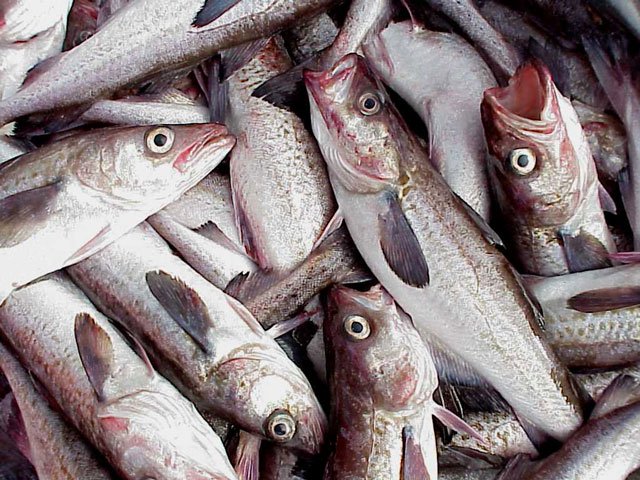Bering Sea fish stocks are booming but it’s a mixed bag for groundfish in the Gulf of Alaska.
Alaska pollock. NOAA photo.Fishery managers will set 2017 catches this week for pollock, cod and other fisheries that comprise Alaska’s largest fish hauls that are taken from three to 200 miles from shore. More than 80 percent of Alaska’s seafood poundage come from those federally-managed waters, and by all accounts the Bering Sea fish stocks are in great shape.
“For the Bering Sea, just about every catch is up,” said Diana Stram, Bering Sea groundfish plan coordinator for the North Pacific Fishery Management Council.
There are 22 different species under the Council’s purview, along with non-targeted species like sharks, octopus and squid. For the nation’s largest food fishery - Bering Sea pollock - the stock is so robust, catches could safely double to nearly three million metric tons, or more than six billion pounds! But the catch will remain nearer to this year’s harvest of half that, Stram said, due to a strict cap applied to all fish removals across the board.
“That means the sum of all the catches in the Bering Sea cannot exceed two million metric tons,” she explained.
With all stocks so healthy, catch setting becomes a tradeoff among the varying species, Stram said. The Council also sets bycatch levels for the fisheries, which makes catch setting even more constraining.
“For the Bering Sea, it is really going to be a tradeoff between halibut bycatch in the flatfish fisheries with the increases in pollock and other species,” Stram said.
The halibut bycatch limit for Bering Sea groundfish fisheries for 2016 and 207 is nearly 7.75 million pounds.
Looking ahead, Stram said fish scientists are concerned about impacts from warming ocean conditions for the third straight year, with both Bering Sea surface and bottom temperatures registering the highest temperatures in 35 years.
Federal data show a 2016 mean surface temperature of 49.1 degrees compared to an average of 43.5 degrees over the time-series. The mean bottom temperature in the Bering Sea was just below 40 degrees, compared to an average of 36.3 degrees.
Warming oceans are being blamed for a big decline in Gulf of Alaska pollock catches for next year.
“Overall, it will be about a 20 percent Gulf-wide decrease,” said Jim Armstrong, Plan Coordinator for Gulf groundfish. “If you add up all the catches, the whole thing is down by about 60,000 tons, with 50,000 tons coming from pollock and a 10,000 ton decrease from cod.”
The downturn in pollock is particularly troublesome because recent harvests have been sustained by a single strong year class from 2012.
“We have zooplankton that in cold years have a lot more lipids (fats) and are more nutritionally valuable to pollock, and we need those cold years to create big year classes,” Armstrong said. “Based on this year’s survey, it doesn’t appear it is being followed by even an average year class.”
Alaska managers oversee 25 fish stocks in the Gulf, which add up to nearly 130 different fish types when various complexes, such as rockfish, are broken out.
One bright spot next year is black cod, or sablefish - catches will increase in all four Gulf fishing regions and in the Bering Sea.
The North Pacific Council meets December 6 through 14 at the Anchorage Hilton. All sessions are streamed live on the web.







